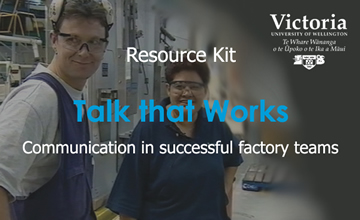Teaching and learning resources
Building site and eldercare materials (2013/14)
These materials have been designed for teachers of people with limited competence in English who come from other language backgrounds with the goal of becoming eldercare support workers or who plan to work in the construction industry. The resources are designed for use in workplace-focused ESOL classes or communication training courses in English-speaking countries, especially, but not exclusively, Australia and New Zealand. The resources could also be used in one-to-one tutoring contexts. The resources have been developed from recordings of ordinary everyday interactions in eldercare facilities and on building sites.
Working on a building site: An ESOL resource
Unit Two:
Unit Three:
View list of unit three audio files
- file467.8KB1.-VocabPictureMatch.WMA
- mp3666.8KB2.N.Whole_Conversation.mp3
- mp3944.0KB2.S.Whole_Conversation.mp3
- mp397.5KB3.Sa.JustGrabAHandSaw.mp3
- mp3103.4KB3.Sb.HolditLevel.mp3
- mp370.7KB3.Sc.DoTheSameTwo.SameTime.mp3
- mp330.7KB4.Sa.IsThereOneInYourCar.mp3
- mp324.1KB4.Sb.ThisOne.mp3
- mp345.2KB4.Sc.WhatIsTheBestWay.mp3
- mp332.0KB5.S.ThatIsRight.mp3
- file342.0KB6.KeyVocabulary.WMA
Unit Four:
View list of unit four audio files
- file318.3KB1.VocabPictureMatch.WMA
- mp344.2KB3Sa.Go_find_some_more_of_those_ones.mp3
- mp330.9KB3Sb.Well_probably_need_a_few_of_them.mp3
- mp340.8KB3Sc.Just_pop_them_down_.mp3
- mp340.0KB3Sd.Can_you_Just_go_find_a_box_of_screws.mp3
- mp358.0KB3Se.You_just_grab_a_couple_of_those_screws_and.mp3
- mp386.2KB3Sf.Can_you__just_go_find_that_black_cordless_drill.mp3
- mp339.4KB3Sg.Might_grab_the_dumpy_back_as_well.mp3
- mp318.1KB4S.Which_ones.mp3
- file281.3KB5.Key_Vocabulary.WMA
Unit Five:
View list of unit five audio files
- file419.0KB1.Vocab.Picture.Match.WMA
- mp31.6MB2N.Whole-conversation.mp3
- mp32.1MB2S.Whole-conversation.mp3
- mp3182.1KB3Sa.Chuck-this-pencil.mp3
- mp361.1KB3Sb.Climb-up-here.mp3
- mp3163.9KB3Sc.Just-mark-the-stud.mp3
- mp358.5KB3Sd.Use-your-tape-measure.mp3
- mp351.9KB3Se.Marked-them-all.mp3
- mp3186.2KB3Sf.Can-you-just-drill-those-holes-.mp3
- mp3119.2KB3Sg.Done-the-high-ones-.mp3
- mp3156.3KB3Sh.Jump-off-the-ladder.mp3
- mp3169.7KB3Si.Do-the-rest-from-the-ground.mp3
- mp389.4KB4S.How-far-apart-are-the-holes.mp3
- file245.8KB5.KeyVocabulary.WMA
Working in an eldercare facility: An ESOL resource
Unit One:
Unit Two:
Unit Three:
Workplace talk in action: An ESOL resource
Resource kit: talk that works (2002) (out of print)

- exploring the communication strategies used in effective multicultural workplace teams, and/or
- learning about the discourse features of spoken English in typical New Zealand factories.
This resource kit will be of interest to workplace trainers, English language teachers, human resources professionals and others involved in the development of workplace language, literacy and communication skills. The kit includes a video and a handbook for teachers/trainers:
Video (37 minutes running time)
Part I: a 10-minute video sequence introducing four key elements of effective communication in multicultural factory teams;
Part II: five repeated sequences from the main video and a selection of 14 unscripted interview and interaction clips, suitable as stimulus materials for language teaching and communication training.
Handbook
Includes transcripts of the spoken and written texts on the video, explanatory notes for teachers/trainers and suggestions for using the materials. The video and accompanying handbook are based on actual footage of workplace interaction and interviews with factory staff. These recordings were collected by Maria Stubbe and Pascal Brown as part of a Language in the Workplace action research project on communication in multi-cultural factory teams.
